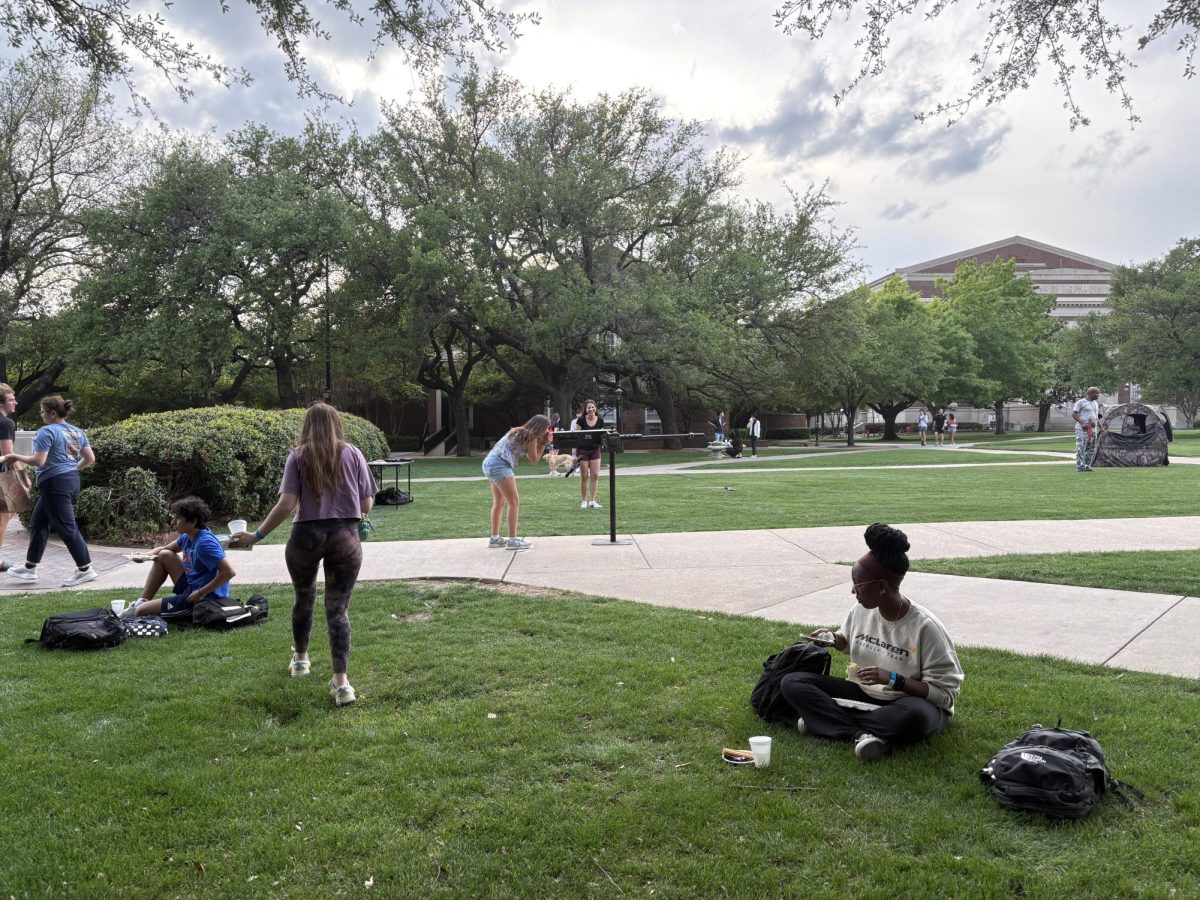You may have seen the airplane carrying a banner advertising the upcoming SMU-TCU game flying above campus on Wednesday and Thursday.
While the administration’s determination to apparently foster a sense of patriotism (or matriotism?) for our alma mater is admirable, I could not help being incensed by it. My immediate question was: How much did that cost and who paid for it?
As a student with no connections to investigative journalism and little time outside of class and work, I have no way of finding out who funded it. Regardless, it brings to light a subject that has lately been on my mind: how the university prioritizes its spending.
I must admit I have returned to SMU after a year at a London university. While there, I exchanged details of our respective higher education systems with other students, many of them international students like myself — my peers, and yours. I was almost jealous to find that the average Commonwealth student, before financial aid, paid around £2000-4000 (roughly US$3000-6000) a year to attend university in the UK (a three year program) and no more than £11,000 (US$17,000) a year at the best colleges at Oxford and Cambridge. I was embarrassed when French friends whose post-financial aid tuition fees ranged between €5 (yes, you read correctly) and €500 a year asked me why I allowed my university to ‘rob’ me.
I, like many of you might, consoled myself with the idea that they must pay exorbitant taxes in order to subsidize such education. But I discovered two things as the year wore on, and students of the various University of London colleges began to protest faculty and departmental cuts.
First, the affordability of the universities, although, indeed, substantially subsidized, is increased by cutting expenditures that are wholly irrelevant to higher and specialized education. For example, they do not spend money replacing flower beds every three months or building new fountains. They do not spend the time or effort in requiring students to meet general educations requirements. The desire for a liberal arts base to a higher (and specialized, I’d remind you) education is an admirable one, but, as students at SMU, I trust we have all received far more than merely decent broad educations at our high schools, and for that reason, I find the GEC superfluous.
I also do not profess to know what proportion of the university’s income from tuition fees is spent on sports scholarships, June Jones’ $2 million salary or advertising of the like I have already mentioned- -but the fact that SMU’s rivalry game has to be so publicized to its own student body makes me doubt that the allure created by our football team is as great as some think it to be.
We are, after all, a university, a place of learning, and not a sports team or gardening enthusiasts’ club. Yet, you’d never know from the amount of public attention either gets. And while I do not advocate the elimination of beloved college sports or call for the European-like subsidization of our university, I do believe we have a lot to learn from Europe’s example, at least in regards to what exactly a university is.
Here, we often think of “the university” as the administration who makes decisions on class requirements and funding with input from a few faculty members and the odd student representative. We are rarely treated as equal adults and often have little opportunity as an entity to participate in the quotidian running of the university beyond our Student Senate, which pales in comparison to Europe’s student unions.
But really — is this what a university is or should be? I don’t think so. The university is a place of learning. It is students and professors, you and me. And it should be the administration’s job to serve our interests as students and academics. They should make sure that we have the time and funding to be more than half-dedicated to our education as we work part-time and enter thousands of dollars into debt before we even reach the job market proper. Not meaning to take aim solely at the football program, but the $2 million we pay June Jones yearly could send over 40 students to SMU with full-ride scholarships, including room and board.
I don’t mean to target only the sports teams, nor imply they bring no benefits to the university. I don’t claim to know how much the football or other program spend or make, nor even how much of our tuition fees are involved, but I do know that throughout my years in attendance at SMU, I have become more and more dissatisfied with the administration’s seeming disregard for academic life, to the benefit of such program. The kind of focus on sports, the like of which we saw in the skies over campus on Wednesday last has only made that disregard — or at least reversal of priorities, all the more apparent to me.
Jessica Ringeisen is a senior international studies major. She can be reached for comments or questions at jringeisen@smu.edu.








